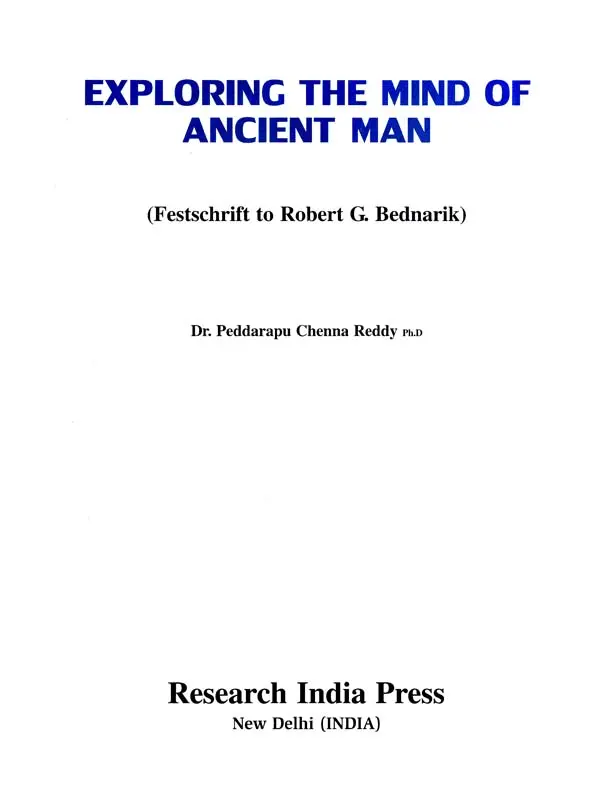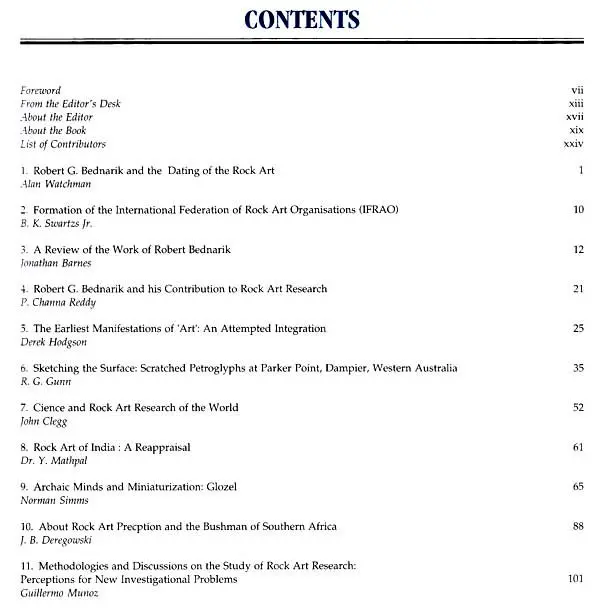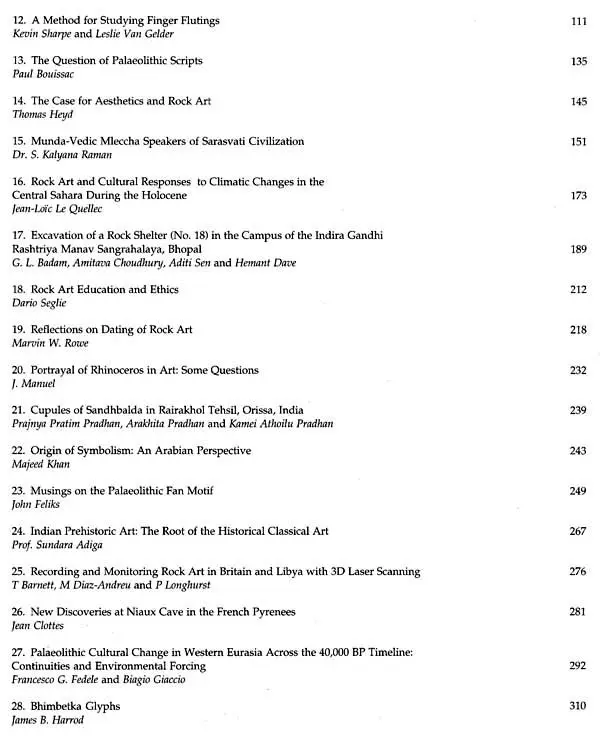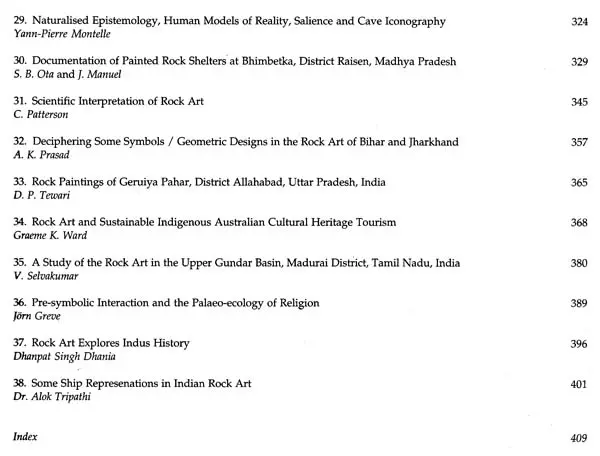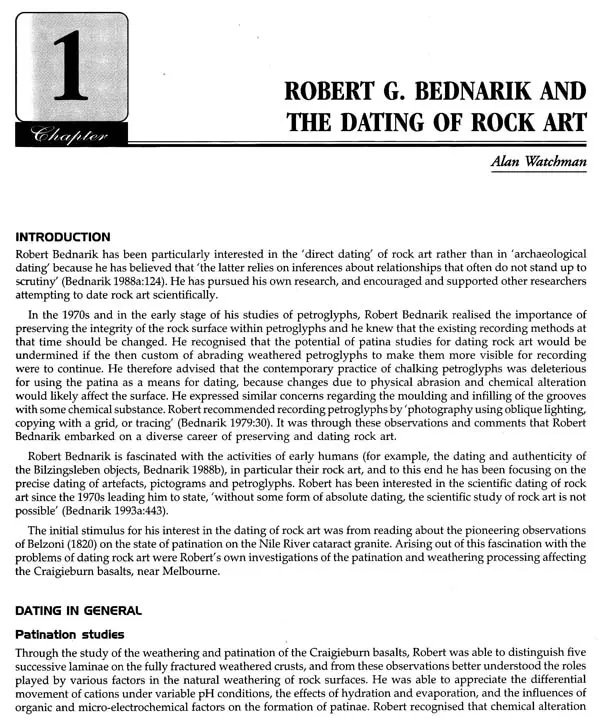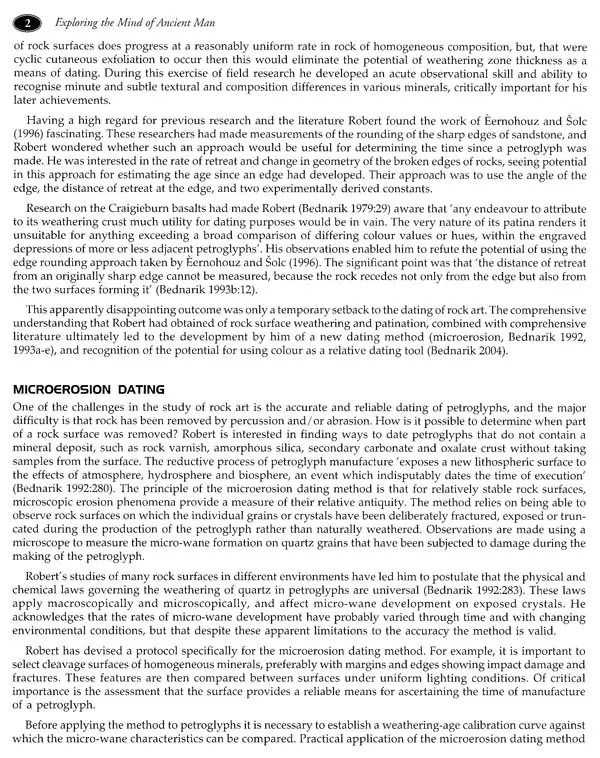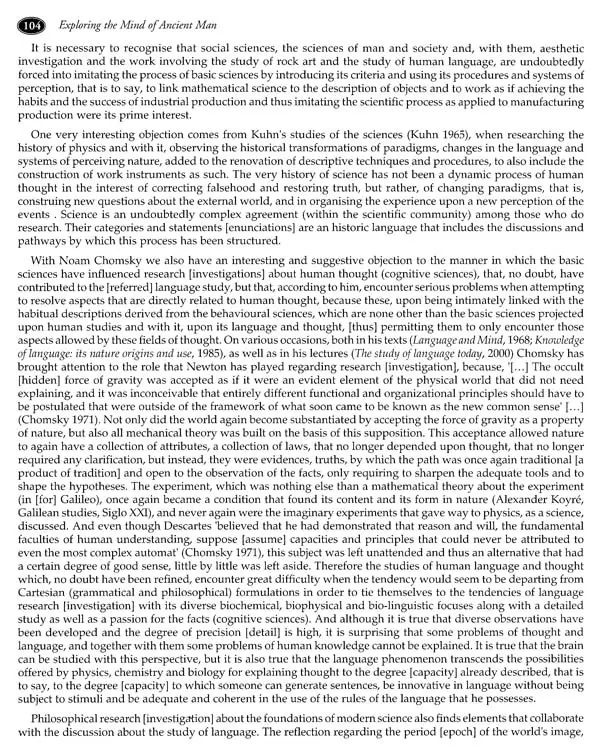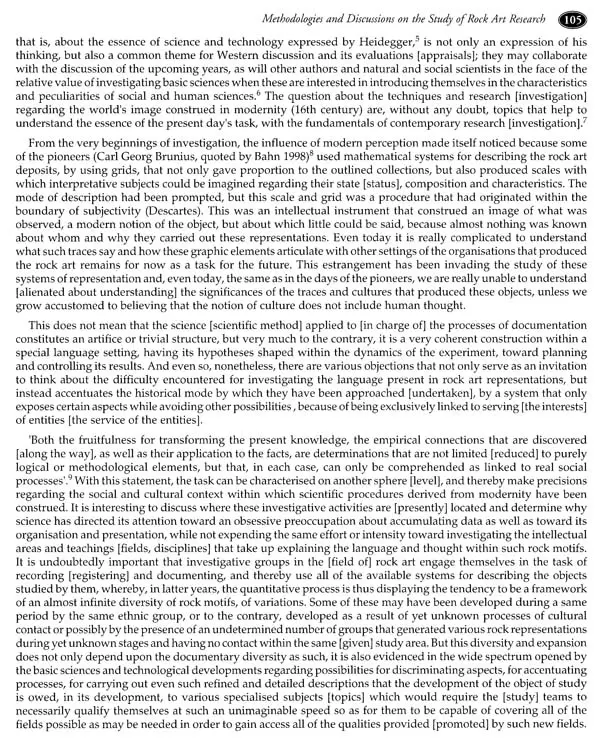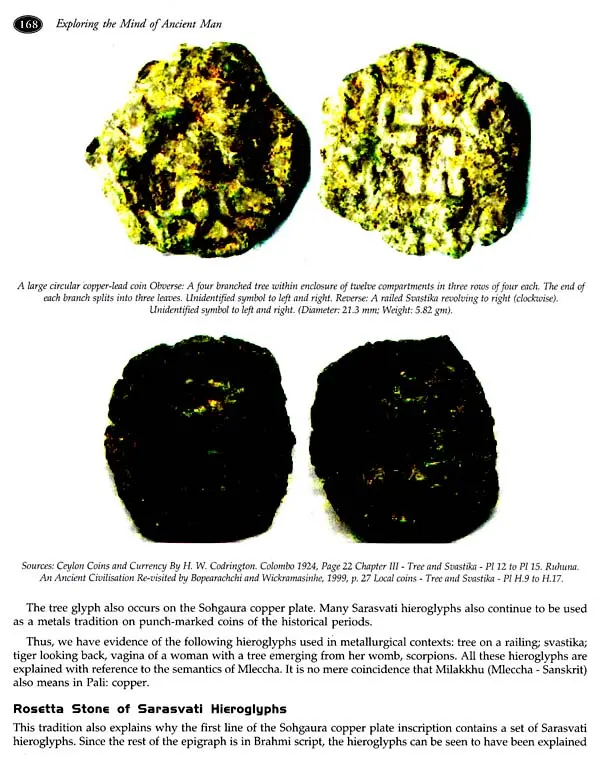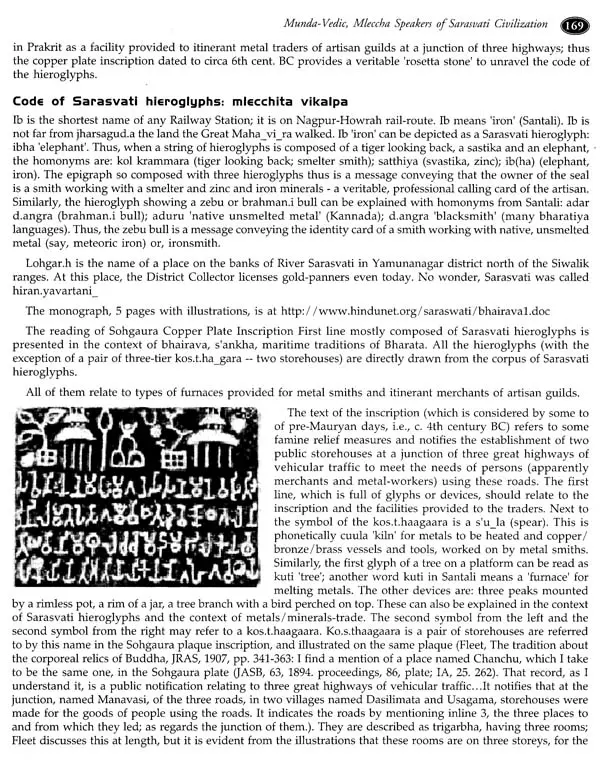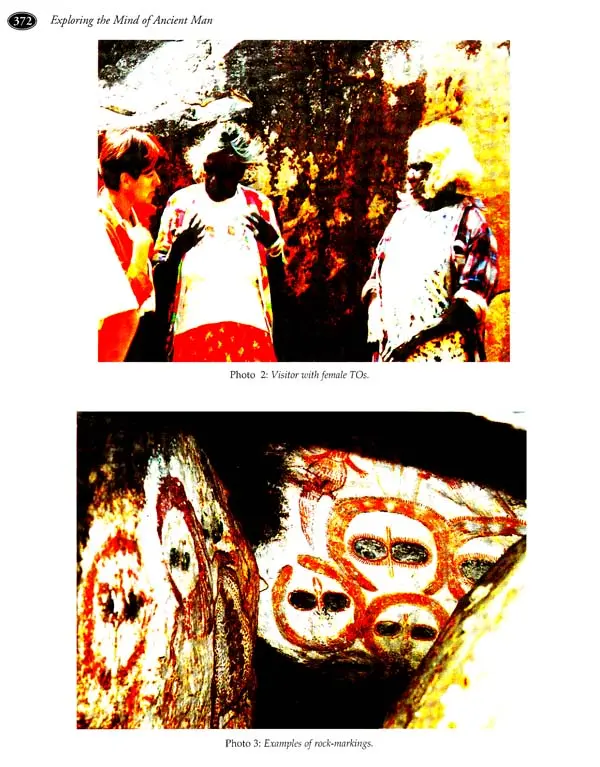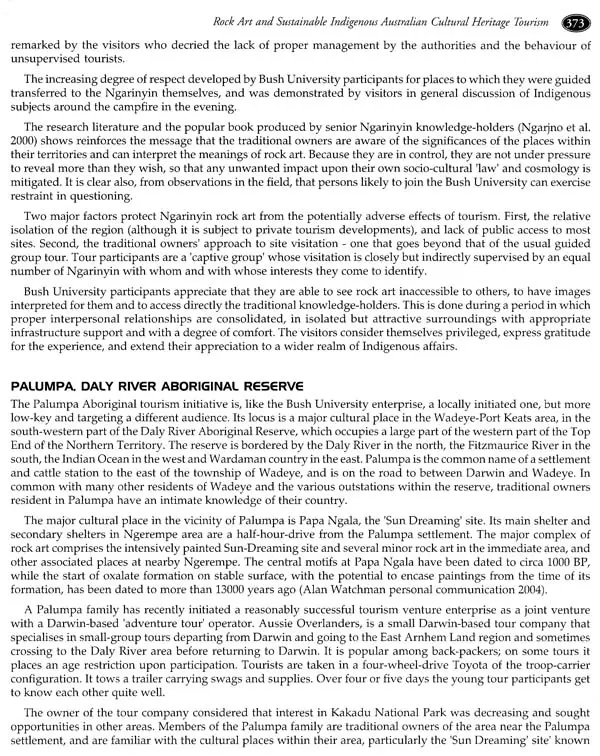
Exploring the Mind of Ancient Man- (Festschrift to Robert G. Bednarik)
Book Specification
| Item Code: | UAJ778 |
| Author: | Peddarapu Chenna Reddy |
| Publisher: | Research India Press |
| Language: | English |
| Edition: | 2007 |
| ISBN: | 9788189131098 |
| Pages: | 444 (Throughout color Illustrations) |
| Cover: | HARDCOVER |
| Other Details | 11.00 X 9.00 inch |
| Weight | 2.09 kg |
Book Description
This book offers a major collection of invited papers assembled for the specific nccasion of the 60th birthday of Australian researcher Robert G Bednarik Its widely ranging topics reflect the equally wide-ranging interests of this most productive scholar, but they are all somehow arranged around his primary focus: the mind of ancient man, how he came to be human, and what kinds of scientific methodology might be brought to bear on the ambitious task of exploring these subjects. A large number of Indian and international scholars. representing most continents, address the broad spectrum of Bednarik's interests, and acquaint the reader with many of the specific problems and issues surrounding questions of the origins of culture, of human realities and the evolution of human cognition. One of the most distinctive common threads in this volume is its preoccupation with prehistoric rock art, reflected in the majority of the contributions, which also reflect the emphasis of Bednarik's continuing life work.
Prof Peddarapu Chenna Reddy is now Dean. Chairman Board of Studies & Head of the Dept, School of History Colture and Archaeology Pott Sreeramulu Telugu University, Srisailam Campus. Andhra Pradesh, South India, Secretary of College Planning and Development Council. Government Degree College Srisailam Project General Secretary of Joint action Committee for All Employees, Teachers Associations/Unions, Srisailam Project. Secretary of Indian Red Cross Society, Joint Sect Joint Secretary of South Indian History Congress and Andhra Pradesh History Congress. He was Vice President of South Indian History Congress. He is an active Social and academic worker and is instrumental and Founder Secretary in establishing in Government Degree College and Dr. Ambedkar Open. University Study Centre in the Srisailam Project for the poor, dalit and tribal people.
He received several felicitations, and awards such as Global Telugus Glory Award (1995); Sahiti Saraswati Siripi Anjaneyulu State award (1999); Best Teacher Award by Bandaru Sarojini Devi Memorial Foundation (2000). Moreover, his Bio data was published in Who is who in the World and VF P's of A. P International (1995-96).
His research interests include Archaeology and Museology, Travel and Tourism Management, Oral History and Folk Culture and Economic History He is now editing a series of Festschrifts in honor of distinguished Indologists, Archaeologists, Anthropologists, Historians, Art Historians and Folklorists of India and Abroad.
This is a labour ut lors, houtage to potial leid, vormitted to the understanding of the first stirrings of so sciousness in the human mind It is an attempt atnegotiating the intellectual inneriery of the human mind through a key to unlock through the millions of years of its history on the earth planet. Rock art is a code word epistemological venture to harm the rigos and punishing discipline, imposed by Dedmark on himself and n within the speach of his ancestors to the world, as it shaped itself around them.
Bednarik's life and work have been dominated by a relentless effort to use taphonic log and repl all intellectual cotets that have clouded such research in the process, he has combated the archaeological poin that the Homo erectus hominids were culturally, technologically and cognitively inferior to the Homo se ve the same way as non-Europeans are inferior to Europeans of the Francon Cantabrian belt. He pits the cognitive priority, semiotic complexity of non-figurative rock markings in the lower and middle Paleolithic in the m Furopean world against the Euro-centric, chauvinistic teleological claims for priority, superiority, centrality, orig nality, rationality and beauty of the figurative rock art of the upper Palaeolithic period from South westem He questions the European assumption of an abrupt quantum jump in which the intrusive Homo sapiens popla tion with sophisticated zoomorphic rock art replaces an interior and archaic Homo sapiena population in the upper Palaeolithic Aurignacian period. In applying his taphonomic logic, he accepts the logic of Occam's razot that the most economical explanation of a given set of conditions is most likely to be true.
Bednarik explains the presence of figurative art in Franco Cantabrian lime caves as a taphonomic survival lected beyond the threshold time of the phenomenon category by its situation in a sealed limestone environment He provides evidence, through replicative experiments and investigation outside Europe, of tool making, ochre use bead and pendant manufacture, burial practice, subterranean mining, sea crossing repeated use of serially struc tured artifacts in the middle and lower Palaeolithic, by the archaic Homo sapiens, Homo habilis and Homo erectus He refutes the ontological origin myth of European archaeology about the beginning of language thirty-two thou sand years ago in European figurative rock art by providing evidence of forward planning, communication and language alongside encephalization and cortical development among the populations, which preceded the Homo sapiens. He has demonstrated the feasibility and reality of Pleistocene seafaring by the Homo erectus for island colonization in East Asia, Australia and the Mediterranean as far back as eight hundred thousand years ago. He poses the long range, multilinear, linguistic model of human evolution against the archaeological theory of short range, unilinear (punctuated equilibrium) human evolution on the basis of material evidence as well as gene flow.
**Contents and Sample Pages**
